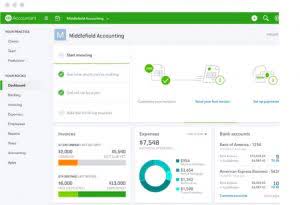Contra Accounts: Explained, Popular Types and Examples

The purpose of a contra expense account is to record a reduction in an expense without changing the balance in the main account. Another type of contra account is known as “contra revenue,” which is used to adjust gross revenue to calculate net revenue, i.e. the “final” revenue figure listed on the income statement. A contra account is an entry on the general ledger with a balance contrary to the normal balance for that categorization (i.e. asset, liability, or equity). Contra expense accounts play a crucial role in financial accounting, offering a nuanced way to track and report reductions in expenses.

Contra revenue
Another common contra liability account is a Discount on Bonds Payable account used by businesses that issue their own bonds. A debit will be made to the bad debt expense for $4,000 to balance the journal entry. Although the accounts receivable is not due in September, the company still has to report credit losses of $4,000 as bad debts expense in its income statement for the month. If accounts receivable is $40,000 and allowance for doubtful accounts is $4,000, the net book value reported on the balance sheet will be $36,000.
- These accounts are typically paired with a corresponding expense account, allowing for a more detailed and accurate representation of financial activities.
- If a contra account is not used, it can be difficult to determine historical costs, which can make tax preparation more difficult and time-consuming.
- Accounts receivable (A/R) has a debit balance, but the allowance for doubtful accounts carries a creditbalance.
- Carbon Collective partners with financial and climate experts to ensure the accuracy of our content.
- Examples of deferred unearned revenue include prepaid subscriptions, rent, insurance or professional service fees.
- Ratios such as the operating margin and return on assets become more meaningful when they are based on net expenses rather than gross figures.
Time Value of Money

A contra account is a general ledger account with a balance that is the opposite of another, related account that it is paired with. The B/S impact is where the contra liability comes into play, i.e. the historical value of the debt is not impacted by the OID. Emilie is a Certified Accountant and Banker with Master’s in Business and 15 years of experience in finance and accounting from corporates, financial services firms – and fast growing start-ups. Allowance for doubtful accounts (ADA) is a contra asset account used to create an allowance for customers that do not pay the money owed for purchased goods or services. The allowance for doubtful accounts appears on the balance sheet and reduces the amount of receivables. If the balance in your allowance for doubtful accounts has a credit of $1,000 and your accounts receivable has $20,000 in normal debit balance, then the net value of the receivables is $19,000.
Example of Contra Expense Account
Let’s go over how they work and what the main types are, and then finish with an example. Master accounting topics that pose a particular challenge to finance professionals. Double Entry Bookkeeping is here to provide you with free online information to help you learn and understand bookkeeping and introductory accounting.
Accounting made for beginners

These accounts are typically paired with a corresponding expense account, allowing for a more detailed and accurate representation of financial activities. For instance, if a company receives a rebate on a previously recorded expense, the rebate would be recorded in a contra expense account, effectively reducing the total expense reported. The list of asset accounts on your general ledger and balance sheet conveys the combined, potential value of all of the tangible and intangible items that your organization possesses. But in the real world, converting all of that potential into hard cash is highly unlikely, if not impossible.
How to Calculate Straight Line Depreciation
- Similarly, accumulated depreciation accounts reduce the value of the fixed assets you report on your financial statements.
- As you saw in the example, contra accounts can be an important part of your financial statement analysis, but they are hard to find.
- Therefore, to ensure accounts receivable stays clean and transparent, CCC will record $2,500 in the contra asset account called “Allowance for Doubtful Accounts”.
- Those who are struggling with recording contra accounts may benefit from utilizing some of the best accounting software currently available.
- Properly documenting these contra accounts in your ledger can sometimes feel counter-intuitive since they operate in an opposite manner from their parent accounts.
- If accounts receivable is $40,000 and allowance for doubtful accounts is $4,000, the net book value reported on the balance sheet will be $36,000.
Taken together, the asset account and contra asset account reveal the net amount of fixed assets still remaining. A contra asset account is not classified as an asset, since it does not represent long-term value, nor is it classified as a liability, since it does not represent a future obligation. Purchase returns, allowances and discounts are all examples of contra expense account accounts. The accounts normally have a credit balance and in use are offset against the purchases account which is normally a debit balance.

Is a Contra Account a Debit or Credit?

- When an expense is initially recorded, it is debited to the relevant expense account.
- When researching companies, the financial statement is a great place to start.
- The amount a company records as allowance for doubtful accounts is the amount from its accounts receivable the company considers uncollectible.
- The benefit of using the contra expense account is that the company’s managers can see in account 4210 the total amount that the company paid to the health insurance company.
- Treasure stock is a good example as it carries a debit balance and decreases the overall stockholders’ equity.
- The company uses Straight-Line Depreciation to track the loss of value of the asset over time.









